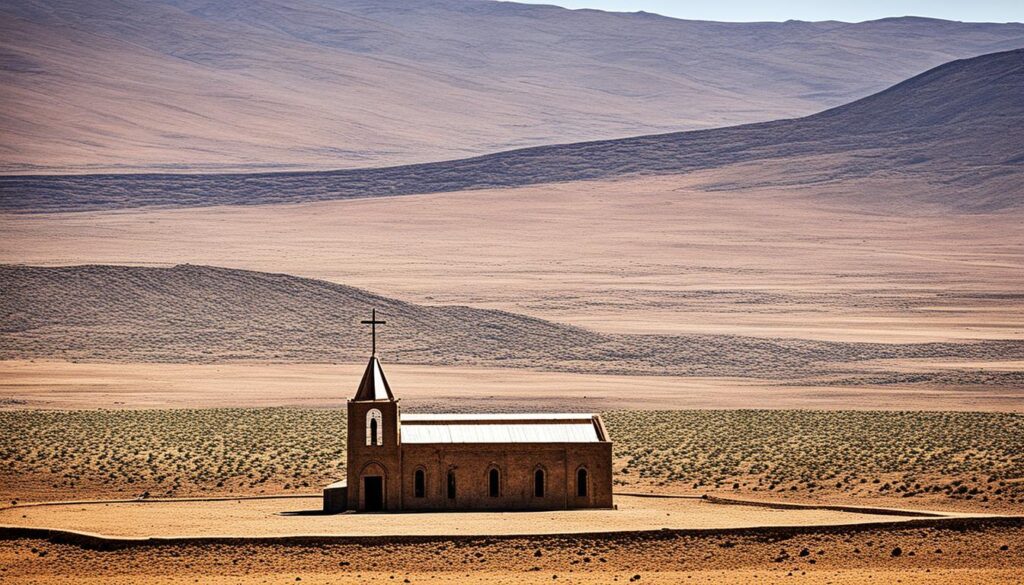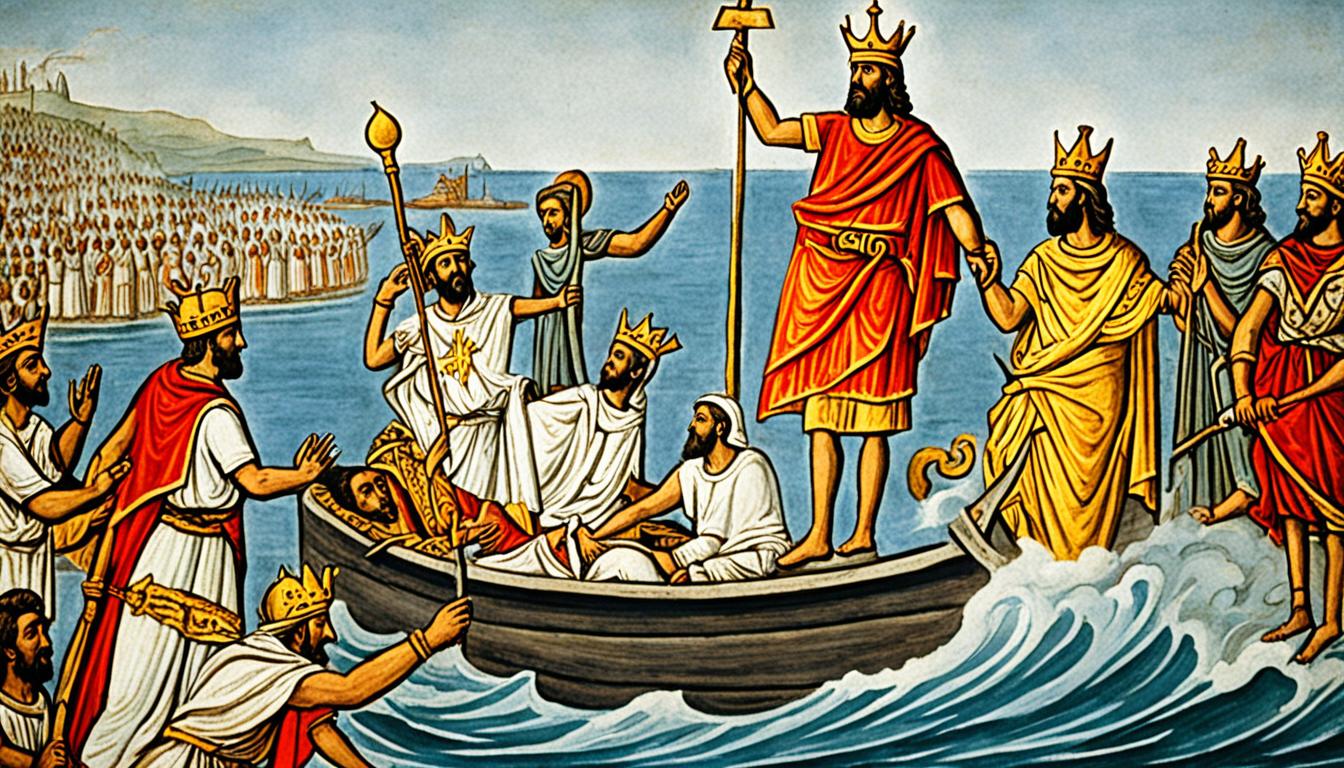How Ethiopia Became Christian?
Did you know that Ethiopia is one of the oldest Christian nations in the world? Christianity has a rich and complex history in this East African country, dating back to ancient times. As we delve into the fascinating story of how Ethiopia became Christian, we’ll uncover surprising facts, explore historical milestones, and discover the enduring legacy of Ethiopian Christianity.
Key Takeaways:
- Christianity in Ethiopia traces its roots back to the reign of the Aksumite emperor Ezana in the 4th century.
- The strategic position of the Aksumite kingdom along major trade routes played a crucial role in the adoption and development of Christianity in Ethiopia.
- The Aksumite conversion to Christianity was influenced by the desire to strengthen trading ties with the Roman Empire.
- The Zagwe dynasty and the Early Solomonic period further contributed to the spread and preservation of Ethiopian Christianity.
- Despite challenges throughout history, the Ethiopian Orthodox Church remains the largest Christian denomination in Ethiopia.
The Zagwe Dynasty and the Expansion of Christianity in Ethiopia
Following the decline of the Aksumite kingdom, the Zagwe dynasty emerged and ruled Ethiopia during a period of reduced wealth and international prestige. Although there is limited historical documentation from this era, evidence suggests that the Zagwe dynasty lasted until 1270.
The city of Roha, later known as Lalibela, became the ceremonial center of the Zagwe dynasty and was home to rock-hewn churches inspired by Aksumite architecture. These impressive structures, such as the Church of the Redeemer, were carved out of living rock and adorned with paintings and murals.
The Zagwe dynasty played a significant role in the spread and development of Christianity in Ethiopia, particularly through the establishment of monasteries and centers of learning.
One notable example is the Amanuel Church, which was carved entirely from a single piece of rock and stands as a testament to the architectural and artistic achievements of the Zagwe dynasty.
Rock-Hewn Churches of Lalibela
| Church | Construction Period |
|---|---|
| Bete Medhane Alem | 12th century |
| Bete Gebriel-Rufael | 12th century |
| Bete Mariam | 12th century |
| Bete Maskal | 12th century |
| Bete Golgotha | 12th century |
The Early Solomonic Period and European Influences
The overthrow of the Zagwe dynasty by Yekuno Amlak in 1270 marked the beginning of the Early Solomonic period in Ethiopia. Yekuno Amlak claimed legitimacy through an alleged lineage with the ancient rulers of Aksum and sought to revive Ethiopian Christianity. This period witnessed dramatic social and cultural changes, as extensive international trade brought new influences to the region. The Early Solomonic rulers, inspired by the legend of King Solomon, established lavishly decorated royal churches and patronized the arts. They also embraced European artistic techniques and hired European artisans to enhance their authority and prestige. The Ethiopian Orthodox Church flourished during this period, and numerous monasteries were established as centers of learning.
Challenges and Preservation of Ethiopian Christianity

Ethiopian Christianity has faced its fair share of challenges throughout its history. One notable obstacle came in the form of the Islamic jihads of the 16th century. These military campaigns resulted in the destruction of numerous royal churches, libraries, and monasteries, causing significant damage to the religious and cultural heritage of Ethiopia.
However, amidst the destruction, some remnants of the early Solomonic period’s artistic patronage managed to survive. These precious artifacts were carefully preserved in remote monasteries, serving as a reminder of the rich history and artistic achievements of Ethiopian Christianity.
The Ethiopian Orthodox Church, despite external pressures, has remained resilient and unwavering. It has continued to play a significant role in Ethiopian society, providing spiritual guidance, fostering a sense of community, and preserving ancient traditions.
The Ethiopian royal dynasty also played a crucial role in upholding the Christian faith. For centuries, the Ethiopian emperors, including Emperor Haile Selassie, served as the guardians of Ethiopian Christianity, ensuring its preservation and protection.
| Challenges to Ethiopian Christianity | Preservation of Ethiopian Christianity |
|---|---|
| – Destruction of royal churches, libraries, and monasteries during the Islamic jihads of the 16th century | – Preservation of early Solomonic period’s artistic patronage in remote monasteries |
| – External pressures and cultural influences | – Resiliency and unwavering faith of the Ethiopian Orthodox Church |
| – Overthrow of Emperor Haile Selassie in 1974 | – Continued role of Ethiopian royal dynasty in upholding the Christian faith |
Despite these challenges, the Ethiopian Orthodox Church remains the largest Christian denomination in Ethiopia, with millions of dedicated followers. Its perseverance and steadfastness are a testament to the enduring strength of Ethiopian Christianity.
Preserving a Strong Spiritual Heritage
“The history of Ethiopian Christianity is filled with challenges, but it is also marked by the resilience and determination of its followers. The preservation of the faith, despite external pressures, reinforces the profound spiritual heritage of Ethiopia.”
Today, as Ethiopia continues to evolve, Ethiopian Christians face new challenges and opportunities in a changing world. However, the rich history, cultural significance, and unwavering faith of Ethiopian Christianity continue to inspire and guide future generations.
Conclusion
The journey of how Ethiopia became Christian is a captivating story of faith and cultural transformation. From the conversion of King Ezana in the fourth century to the establishment of the Ethiopian Orthodox Church as the country’s largest Christian denomination, Christianity has played a central role in Ethiopian history.
The Aksumite Empire, the Zagwe dynasty, and the Solomonic rulers all contributed to the spread and development of Christianity in Ethiopia. This rich history left a lasting legacy, visible in the breathtaking church architecture, the vibrant artistic patronage, and the deeply-rooted religious traditions of the Ethiopian Orthodox Church.
Despite the challenges and historical changes over the centuries, Ethiopian Christianity remains a vibrant and integral part of the country’s cultural and religious identity. Today, the Ethiopian Orthodox Church continues to thrive, with millions of followers throughout the country. Its enduring presence is a testament to the resilience and enduring spiritual faith of the Ethiopian people.






